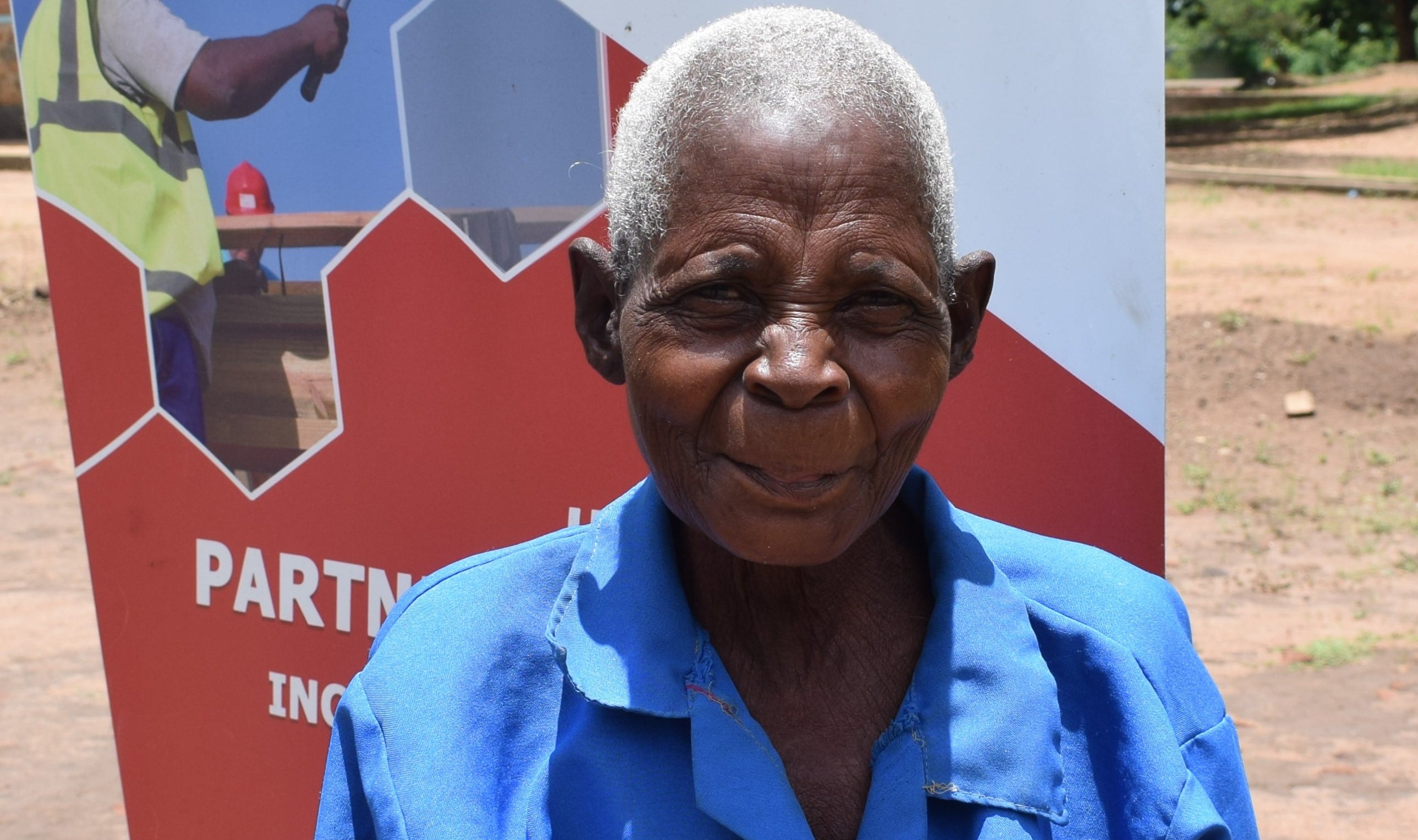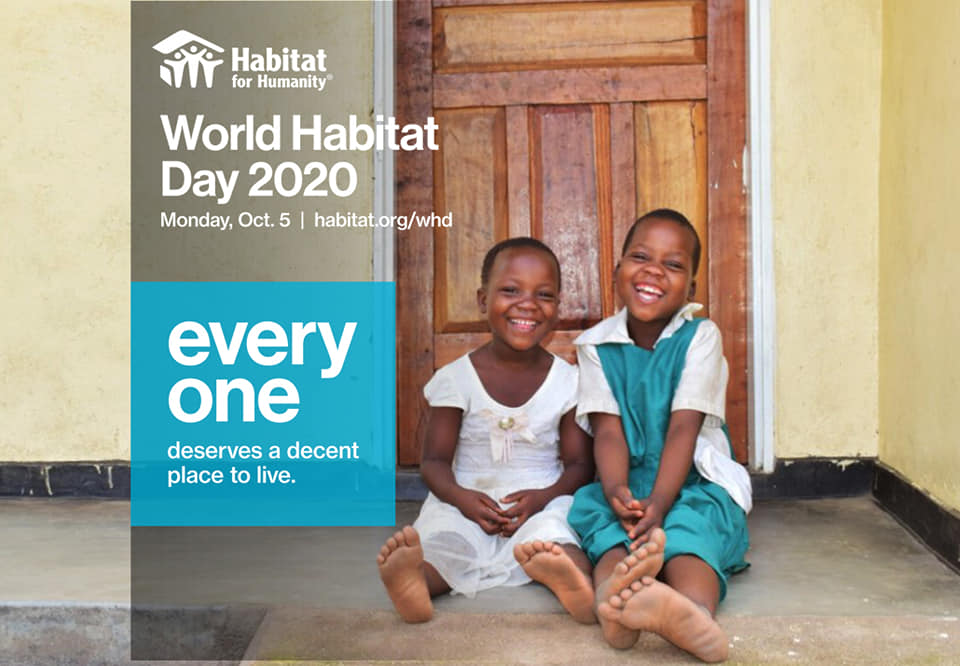

ORPHANS AND VULNERABLE CHILDREN (OVC)
Unsanitary, temporary housing conditions, such as mud floors, thatched roofs, poor ventilation and no windows characterize 78% of houses in Malawi. These houses need constant repair and re-thatching because of the nature of materials used.
One of the problems in the rural areas is that grass for thatching is becoming less and less available due to pressure on the land for agricultural use. Many families have sleepless nights during the rainy season due to leaking roofs. It creates a very damp and unhealthy atmosphere. Such housing is conducive to the spread of diseases like respiratory and gastro-intestinal infections, particularly among children under five years of age and those with HIV- weakened immune systems. Further, when parents die, the basic security and health afforded by a home are lost due to the interrelated issues of inheritance rights and inability to afford rentals or home maintenance. Houses of the poor that live the urban areas are slightly better, but often rented, have leaky roofs and are in crowded, and are in unsanitary conditions.
It is estimated that in Malawi, 1.4million orphans have lost one or both parents largely due to the HIV and AIDS pandemic which is now at a 10.% prevalence rate . Most orphans are taken care of by their sibling (an older brother or sister) or a close relative in poor quality homes with mud walls, dirt floors, grass-thatched roofs and poor ventilation. These homes put the children at risks of disease, fires and in some cases even rape for the girl child.
It is for such reasons that HFH Malawi started implementing the OVC project in some parts of Malawi which aims at providing shelter as one way of eliminating poverty and improving the lives of orphans and other vulnerable people.
WATER SANITATION AND HYGIENE (WASH)
Malawi is one of the poorest countries in the world, with a gross domestic product per capita of US$ 290 in 2009. Malawi’s population is estimated at 18 million with a 3.3% growth rate per annum. The Malawi population is predominantly young with the youth making up of almost 70% of the population. Like the rest of the countries in the sub-Saharan Africa region, Malawi is battling with devastating impacts of high HIV and AIDS prevalence, estimated at 10.8% of the adult population. The country achieved the Millennium Development Goal on water, with 80 % of the population accessing safe water. Nevertheless, approximately 30% of water sources are in disrepair. On sanitation, 88% of the rural population practices basic excreta disposal but challenges exist in access to improved sanitation facilities, which now stands at 60 per cent.
Malawi faces critical challenges in addressing its sanitation needs in order to protect and preserve Health, but a complex array of factors which include limited resource has affected the results. The overall sanitation of status of Malawi presents significant gaps. It is reported that 11 % of the population still defecate in the open, that 18% of the deaths of children under the age of 5 are due to diarrheal diseases (4% more deaths than attributed to Malaria) and less than 1% of mothers wash their hands before feeding a child (GSF sector review, 2009).
81% of schools in Malawi provide children with water from protected water sources such as boreholes, taps or hand dug wells equipped with a pump. The borehole is the most common source of water, available in two thirds of the schools in Malawi. However, children from 19% of the schools’ drink water from an unprotected source as a hand dug well without a pump, a stream or spring. These children are daily exposed to the dangers of water borne diseases like diarrhoea, cholera and dysentery.
On school sanitation, on average, there is one facility for every 60 pupils in 23% of the schools in Malawi. In another 14% of schools between 61 and 100 pupils share a facility and more than 100 pupils share a facility in 26% of the schools. W.H.O recommends 25 pupils per latrine and 60 per latrine where urinals are provided. Only 4% of the schools in Malawi provide handwashing facilities with soap. The rest either provide a hand washing facility without soap or provide none at all.
Water, sanitation and hygiene in schools significantly contribute to the quality of education because students are more likely to come to school if facilities are of good quality and of adequate quantity, and this is particularly true for older girls. Proper facilities for menstrual hygiene contribute to girls attending school during days of their menstrual periods instead of staying at home, or even dropping out of school altogether when they reach puberty. Therefore, provision of WASH in schools alleviates problems of retention of girls and improves gender equity.
DISASTER RISK REDUCTION AND RESPONSE
Malawi, one of the top 10 countries affected by the el-nino phenomenon, has experienced increase in the frequency of meteorological disasters, in particular floods, in the past 4 decades, causing localized extensive disruptions of economic and social systems of the population. The flood hazard is mainly localized in Southern Malawi, affecting Chikhwawa and Nsanje Districts due to the flooding of the Shire River and the Ruo River.
In January 2015, 15 districts of Malawi were affected by storm and floods that affected 1.1 million people, including 230,000 displaced. The Government of Malawi’s (GoM) Post Disaster Needs Assessment (PDNA), estimated losses exceeding USD$340 million, with housing being the worst affected sector (33% of the total losses at USD$114.5 million) . The February 2015 Shelter Cluster’s Joint Rapid Damage Assessment (JRDA), found that 61% of assessed families indicated some form of damage to their homes (36% requiring repair and 25% rebuild) and that between 293,350 and 394,473 people were affected. From this data, it is estimated that 35,000 to 47,000 houses are in need of repair and 25,000 to 32,000 to be rebuilt.
Following the disaster and the President of Malawi’s Declaration of State of Emergency in the affected districts, many agencies and organizations carried out emergency response programs in various areas including food aid, temporary shelter, water and sanitation, and provision of various non-food items. However, despite the fact that there was heavy damage to houses, there was has been limited response to address long term shelter needs of the affected families.
The traditional houses in the project area are weak because of poor siting, shallow foundation, lack of dump proofing, low floor height, unplastered plinth and walls, poor quality adobe bricks and poor roofing materials. In addition, most of the local artisans do not have adequate skills and basic tools to construct and repair houses that are disaster resilient. During the 2015 flood disaster, some of the artisans lost their construction tools thereby making them unable to undertake any construction works. In light of this, HFHM as one of the leading NGOs focusing on shelter interventions in the country, has developed a strategy for addressing shelter needs targeting households in flood-prone areas of Chikwawa District, one of the most flood-prone districts.
HFHM has been present in Chikwawa District since 2012 carrying out various interventions including pilot construction of 8 disaster resilient houses, construction of 30 house for orphans and vulnerable children and distribution of 11,146 NFIs to flood affected victims. During this period HFHM has developed partnership with local district council, relevant community structures as well as with other organisations like MRCS, and SOS Childrens Villages.


